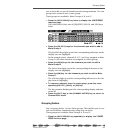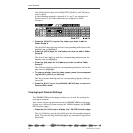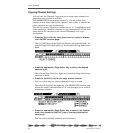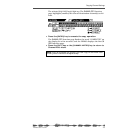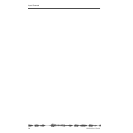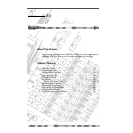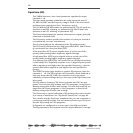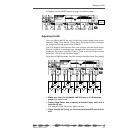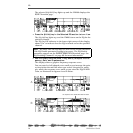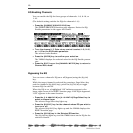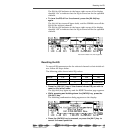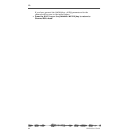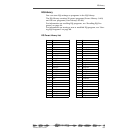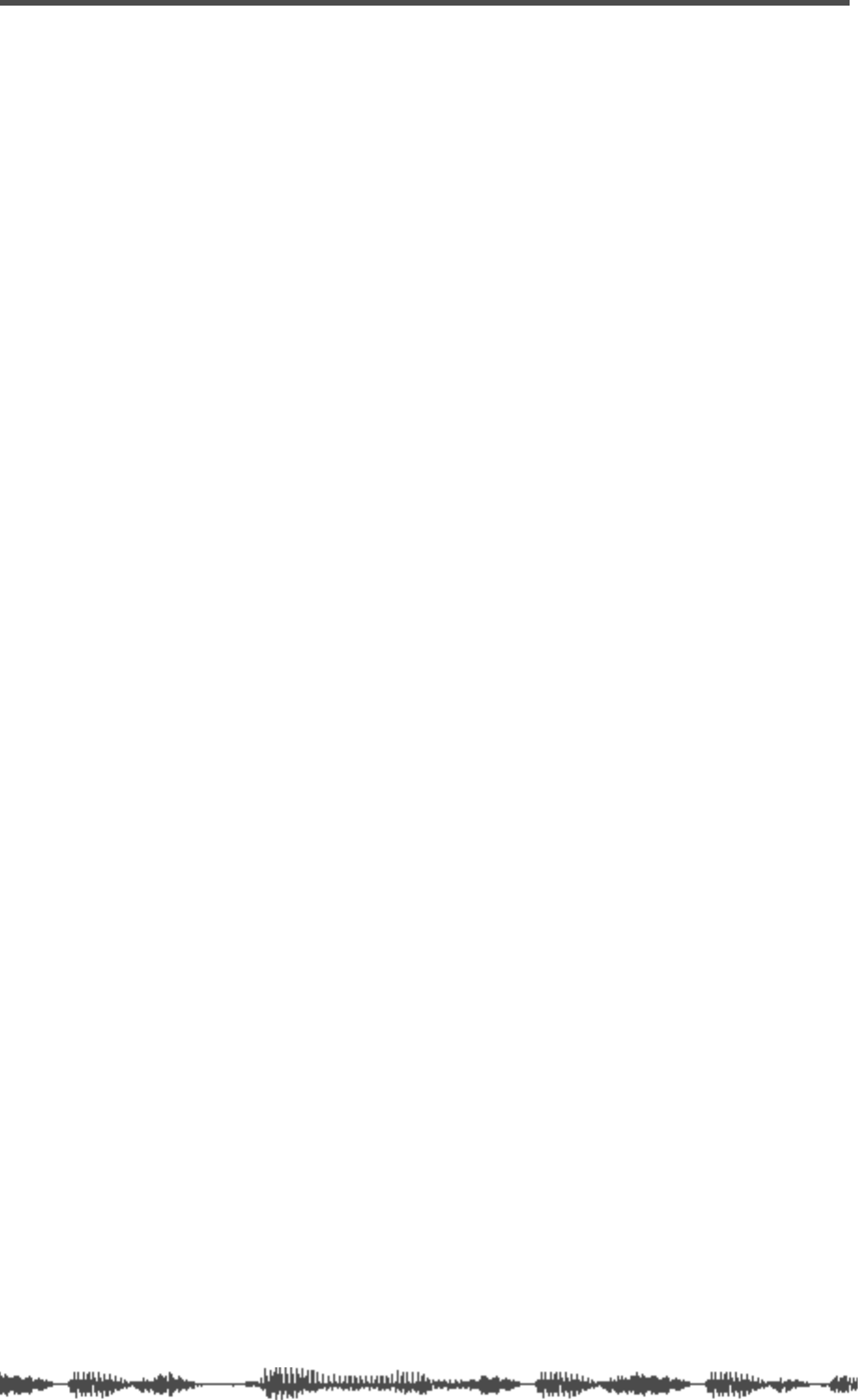
EQ
76
VM200 User’s Guide
Equalizers (EQ)
The VM200 features a four-band parametric equalizer for input
channels 1–16.
The four-band equalizer subdivides the audio spectrum into LO,
LO-MID, HI-MID, and HI frequency ranges. Each of the four bands
includes rotary controls for Gain, Frequency, and Q.
The LO-MID and HI-MID bands use parametric EQ. The LO band can
function as an HPF, shelving, or parametric EQ; the HI band can
function as an LPF, shelving, or parametric EQ.
The Gain control adjusts the amount of increase in a signal, generally
measured in decibels (dB).
The Frequency control specifies the number of cycles-per-second of
a waveform (in our case, soundwaves).
The Q control adjusts the sharpness of the EQ peak response.
The LO band Q can function as a high-pass filter (HPF), and HI band
Q can function as a low-pass filter (LPF).
A low-pass filter (LPF) rejects signals above a certain cut-off fre-
quency while passing lower-frequency signals through.
A high-pass filter (HPF) rejects signals below a certain cut-off fre-
quency while passing higher-frequency signals through.
In a shelving-type (SHLV) EQ, the boosted or cut-off frequencies form
a shelf-shape on a frequency response curve. A high-frequency shelf
affects signals at and higher than the specified frequency; a low fre-
quency shelf affects signals at and higher than the specified fre-
quency.
The
EQ EDIT
function page displays a graphic EQ response curve for
channels 1 - 16. The EQ response curve provides visual feedback to
help you shape the EQ, while the numerical read-outs ensure
extremely accurate settings that you can store in the EQ Library and
later recall.
The EQ Library consists of 50 Preset programs and 50 User pro-
grams. You can store EQ settings into User programs, or into Scene
Memory along with all other mix settings. You can also recall EQ set-
tings from the Preset programs or User programs, or from Scene
Memory along with all other mix settings.
The Presets are a special collection of EQ settings that can be useful
in a variety of situations. See “EQ Preset Library List” on page 83.
You can also use the Presets as templates that you can customize to
create your own EQ settings. You can name and store up to 50 of your
favorite EQ settings as User programs.
If channels are configured as a stereo pair, their EQs are linked.
The EQ parameters and response curve for input channels 1 through




